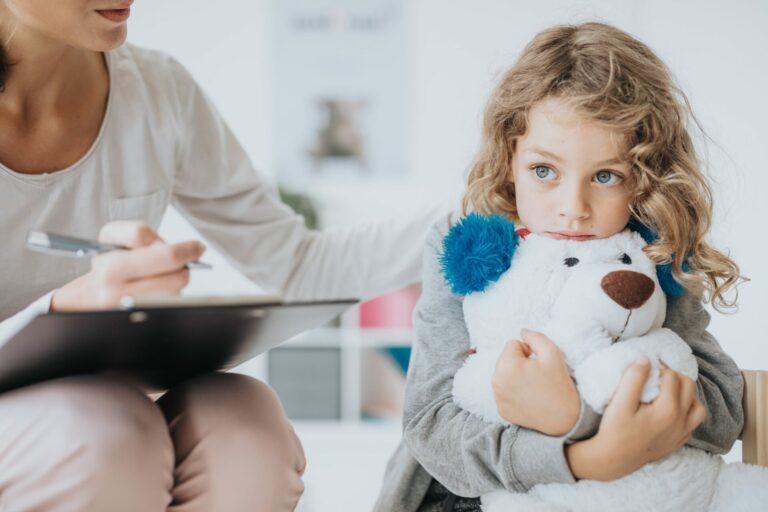How to Help Children who are in Survival Mode?
By Alex Biddell, BHT | September 08, 2023
It is not easy being a parent when your child is misbehaving, is it? Your goal as their parent is to help your children grow into the full-grown adults that they will eventually become. And when you see that your efforts are not received well, it can be discouraging. “What am I doing wrong?”, you might ask. The answer may not be something that you have done wrong as their parent. Instead, it may be that your child is in “Survival Mode” (Wesselmann et al., 2014).
What does “Survival Mode” look like? Research has shown that the behaviors many parents identify as maladaptive may better be explained as the child operating out of a survival instinct because of trauma (Wesselmann et al., 2014). Taking cookies before dinnertime without permission looks like maladaptive behavior on the surface, but to a child who has experienced trauma, they may believe that there is no one to help feed them and they must rely on themselves. Beliefs like this create thoughts that eventually become behaviors… like stealing cookies.
So, what is there to do? Trying to stop the behavior doesn’t fully address the belief that creates it; it will only delay the behavior from returning. It is more important to understand the root of the issue and address it there. For kids who have experienced trauma, their behavior is a result of beliefs that tell them they aren’t safe, loved, or cared for. This means that the first step is building a sense of safety by showing that you care and reinforcing your connection with them. By showing your children that they are safe and loved, they can learn to shed those beliefs that they are not safe or cannot trust others to help them.
The best ways to show your child that you care for them is by being close with them, playing with them, and spending time enjoying activities together (Wesselmann et al., 2014). Connecting positively like this helps ensure that your child feels safe and shows them that you are a trustworthy figure in their life. It takes time to develop, but investing just a little bit of time each day will continue to reinforce that feeling of trust with the child. It is a lot of work, but the time that you spend with your child today helps create a brighter future for them tomorrow.
Lecturas recomendadas
It is not easy being a parent when your child is misbehaving, is it? Your goal as their parent is to help your children grow into the full-grown adults that they will eventually become. And when you see that your efforts are not received well, it can be discouraging. “What am I doing wrong?”, you might ask. The answer may not be something that you have done wrong as their parent. Instead, it may be that your child is in “Survival Mode” (Wesselmann et al., 2014).
What does “Survival Mode” look like? Research has shown that the behaviors many parents identify as maladaptive may better be explained as the child operating out of a survival instinct because of trauma (Wesselmann et al., 2014). Taking cookies before dinnertime without permission looks like maladaptive behavior on the surface, but to a child who has experienced trauma, they may believe that there is no one to help feed them and they must rely on themselves. Beliefs like this create thoughts that eventually become behaviors… like stealing cookies.
So, what is there to do? Trying to stop the behavior doesn’t fully address the belief that creates it; it will only delay the behavior from returning. It is more important to understand the root of the issue and address it there. For kids who have experienced trauma, their behavior is a result of beliefs that tell them they aren’t safe, loved, or cared for. This means that the first step is building a sense of safety by showing that you care and reinforcing your connection with them. By showing your children that they are safe and loved, they can learn to shed those beliefs that they are not safe or cannot trust others to help them.
The best ways to show your child that you care for them is by being close with them, playing with them, and spending time enjoying activities together (Wesselmann et al., 2014). Connecting positively like this helps ensure that your child feels safe and shows them that you are a trustworthy figure in their life. It takes time to develop, but investing just a little bit of time each day will continue to reinforce that feeling of trust with the child. It is a lot of work, but the time that you spend with your child today helps create a brighter future for them tomorrow.
References
Wesselman, D., Schweitzer, C., & Armstrong, S. (2014). Integrative Parenting: Strategies for Raising Children Affected by Attachment Trauma. W.W. Norton, New York.
References
Wesselman, D., Schweitzer, C., & Armstrong, S. (2014). Integrative Parenting: Strategies for Raising Children Affected by Attachment Trauma. W.W. Norton, New York.




